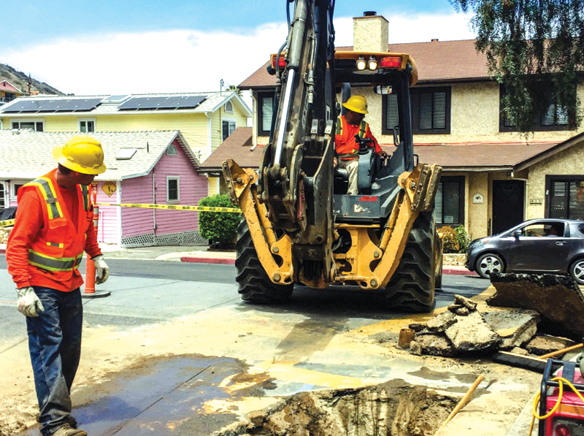
More than a million people visit Santa Catalina Island each year, and while some come for work or a longer excursion to the island’s interior, most are visiting Avalon for just a day of fun.
While many visitors are aware of the historic drought that gripped the island for years, it was residents and businesses that felt most acutely the impacts of the drought and how the island’s infrastructure and commitment to conservation were tested.
“Providing safe and reliable drinking water for island residents and visitors is our priority, and given the age of the system and the impacts of the recent drought, we continue investing in maintaining and improving the water system,” said Ron Hite, SCE’s manager for Catalina Island.
The latest effort is replacing and installing new water isolation valves in Avalon. The project began in mid-May and is scheduled to end ahead of the July 4th weekend, a traditionally busy time for the island’s tourist industry. This phase of the project addresses the highest-priority needs, with future work slated for next offseason.
The new and replaced valves will allow SCE to control the flow of water and isolate parts of the system as needed to conduct maintenance or respond to emergencies. Since 1962, water needs of visitors and the island’s 3,800 full-time residents have been met by a system of pipes, reservoirs, wells and two desalination units operated and maintained by SCE.
“This project will help us limit the number of customers that would be without service in an emergency and also reduce the amount of water that could be lost,” said Tara Prabhu, SCE’s construction manager on the project.
“We know the work can be an inconvenience and that an outage can be difficult for customers, but this is maintenance that has to be done and we are doing everything we can to provide customers with ample notice of any outages and to limit the construction impacts on our customers as much as possible,” she added.
SCE inspected the more than 150 valves in Avalon and determined which ones needed to be replaced and where the system required additional valves be installed. After consultation with the city and providing customers with notices regarding the coming work, the project began.
It is typically a three-day process to replace or install the water valves and residents are aware of the ongoing work in Avalon. Each valve replaced requires traffic rerouting and excavation, a roughly eight-hour customer outage in the impacted area and one additional day to return the site to normal.
“This work may not seem as significant as other recently completed projects such as adding a second desalination plant, refurbishing the million-gallon tank or adding a filtration system to the Wrigley reservoir,” said Hite. “But it is absolutely needed to ensure we can safely and reliably distribute water for our residents and for visitors alike.”









